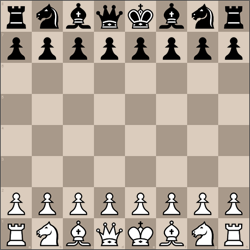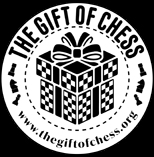< Prev
Index
Next >
 Chess 07 Apr 1901, Sun Chicago Tribune (Chicago, Illinois) Newspapers.com
Chess 07 Apr 1901, Sun Chicago Tribune (Chicago, Illinois) Newspapers.com
Current Chess Topics.
Sidney P. Johnston was compelled to decline an offer to take a board in the cable match on April 19 and 20, America vs. Britain, because the offer came too late. Mr. Johnston has not played hard chess for nearly a year, and does not consider himself in good enough form to do himself or the occasion proper justice.
A London cable announces that Blackburne has declined to play on the British team this year.
“Now for a match by postal cards between Dawson City and Manila,” says the St. Paul Dispatch. A good thing as soon as express mail service by air ships (ten miles a minute) is established.
After five losses the Easterners drew the sixth game in the East vs. West match.
Dr. Paul von Seydewitz, one of the earliest members of the now famous New Orleans Chess, Checkers, and Whist club, whom Mr. Seguin describes as an eccentric but thorough gentleman of the old-time cast, is dead. He was a man of great culture and wide learning.
Here is the Sire de Legal mate again. This time it won a $5 prize for the shortest game at the Ohio Chess association meeting, Dr. Mills vs. Albert White:
Dr. Charles A. Mills (white) vs. Albert White (black)
Philidor Defense
Submitted to chessgames.com on 04/29/2025

Descriptive
1. P-K4 P-K4
2. N-KB3 P-Q3
3. B-B4 B-N5
4. N-B3 P-KR3
5. NxP BxQ
6. BxPch K-K2
7. N-K5mate |
Algebraic
1. e4 e5
2. Nf3 d6
3. Bc4 Bg4
4. Nc3 h6
5. Nxe5 Bxd1
6. Bxf7+ Ke7
7. Nd5# |
Why are prizes given for games without originality.
The Manhattan and Franklin Chess clubs will furnish $75 each to purchase a trophy for a series of annual team contests. The first encounter is scheduled for Memorial day at either New York or Philadelphia. Three straight wins or five in succession will secure the prize.
Emil Kemeny claims the variation by which W. E. Napier attempts to knock out the Rice gambit will not work.
No. 31—By W. Pauly, Bucharest.
White mates in two moves.
Queen's Gambit Declined.

This is the only game lost by Alapin, and one of the four won by Marco. White here had an excellent chance to resign, but overlooked it and twenty-seven other equally good opportunities. He gave up after Marco's fifty-fourth move, when all pieces had been exchanged, and none of Marco's pawns could be stopped from queening. At the local club recently a player punished his opponent for not resigning by bishoping six pawns.
The following game has an interesting ending, in which Janowski must exercise great care to win:



and wins. Marshall's original treatment of the opening is certainly no improvement on book lines, and its weak points are quickly exposed by the Frenchman.

Black won after fifty-five moves, but the game may be dismissed here, as the extra pawn must win with proper play.

Drawn by perpetual check. Mieses might have improved his chances by 20. QR4ch first and 21. QR4ch, thereby hampering Black's defensive maneuvers somewhat.

Tschigorin is the only master who considers it safe to defend this opening by 2. N-QB3. His brilliant combination beginning with 22. N-B4, unfortunately, would not yield more than a draw. Black obtained a splendid free opening.
 Chess 09 Jul 1916, Sun The Philadelphia Inquirer (Philadelphia, Pennsylvania) Newspapers.com
Chess 09 Jul 1916, Sun The Philadelphia Inquirer (Philadelphia, Pennsylvania) Newspapers.com








































